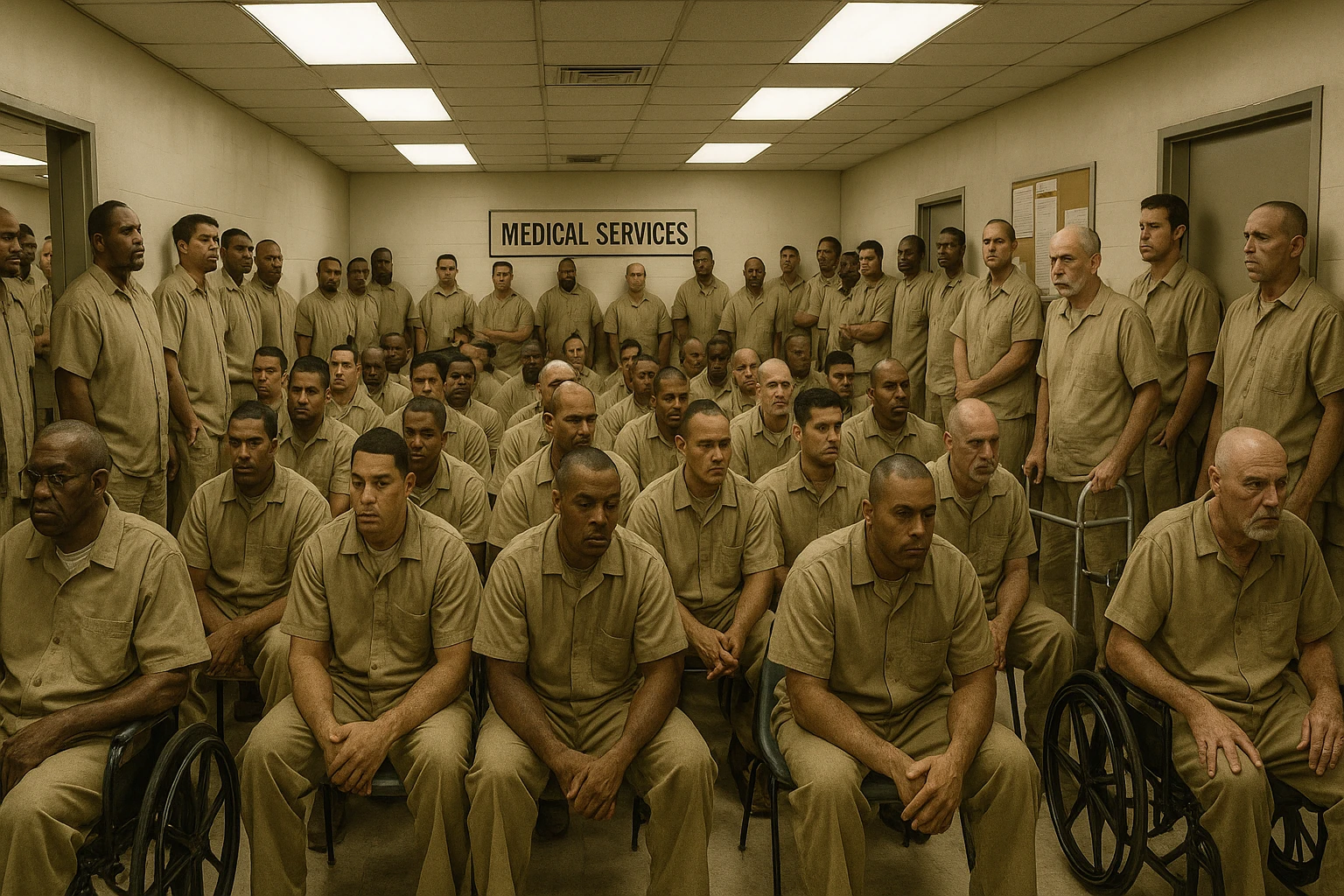The state of healthcare in the Federal Bureau of Prisons (BOP) is nothing short of a catastrophe. Inmates are subjected to poor nutrition, rampant drug addiction, and substandard medical care. Despite BOP policy stating that healthcare within the system should be equivalent to that of the general community, the reality is starkly different—many household pets in America receive better medical treatment than incarcerated individuals.
Poor Nutrition and Unhealthy Lifestyles
Prison diets are heavily reliant on high-carbohydrate, low-protein meals, with alternatives available only through the commissary—where options consist almost exclusively of highly processed junk food. Combined with a sedentary lifestyle, this diet exacerbates chronic health issues such as obesity, diabetes, and cardiovascular disease.
Compounding this issue, prisoners have virtually no access to dietary supplements, and even those with financial means struggle to acquire healthy food. This nutritional neglect contributes to the overall decline in inmate health, burdening an already strained medical system.
Widespread Drug Use and Lack of Treatment
Drug addiction runs rampant in federal prisons. Illicit substances—including fentanyl, heroin, and methamphetamine—are readily available, and inmates engage in risky behaviors such as needle-sharing. Hepatitis C is widespread among intravenous drug users, and HIV infection rates remain alarmingly high. While the BOP spends millions treating these conditions, there is little investment in preventative measures or rehabilitation.
The prison system offers a Residential Drug Abuse Program (RDAP), but it is only available to inmates within three years of release. Even when inmates gain access, the program's effectiveness is undermined by the very environment in which it operates—one where drugs are still prevalent, and untreated addiction fuels continued substance abuse.
Despite the well-documented benefits of medication-assisted treatment (MAT) for opioid addiction, the BOP's implementation of Suboxone therapy is severely flawed. Many non-addicted inmates enroll in the program simply to resell the medication, while those in genuine need often remain untreated. Meanwhile, heavy opioid users face an ever-growing risk of overdose.
Neglected Mental Health Needs
A significant percentage of inmates suffer from mental health disorders, yet psychiatric care within federal prisons is woefully inadequate. Many individuals with Attention Deficit Hyperactivity Disorder (ADHD) would benefit from medications like Adderall or non-stimulant alternatives such as Strattera, but these treatments are outright banned in the BOP. As a result, some inmates resort to illicit methamphetamine use as a self-medication alternative.
Solitary confinement, which is frequently used as a disciplinary measure, further exacerbates mental health issues, worsening anxiety, depression, and psychosis. Instead of treatment, many mentally ill inmates are left to suffer in silence.
Overburdened and Understaffed Medical Services
Access to medical care within the BOP is a grueling process. Overworked and underfunded, prison healthcare staff must prioritize emergencies over routine care, forcing many inmates to see a physician’s assistant multiple times before being granted access to a doctor. Even when a legitimate medical need is identified, securing outside treatment becomes an arduous battle against bureaucracy and budgetary constraints.
Adding to the challenge, prisons are seeing an increase in medical complications stemming from the use of synthetic drugs like K2 and Spice—substances with poorly understood long-term health effects. This influx of unfamiliar medical conditions only further clogs an already overwhelmed system.
The Physical Toll of Prison Life
Beyond the rampant drug use and medical neglect, the very environment of federal prisons poses a serious risk to inmate health. Facilities are built from unforgiving concrete and steel, maintenance is inconsistent at best, and workplace safety regulations are virtually nonexistent. Inmates frequently suffer injuries from accidents, violence, and hazardous conditions, yet BOP medical services lack the funding and resources to adequately address these emergencies.
Ironically, the BOP spends more money on wrongful death and malpractice litigation than it does on actual healthcare for inmates. The medical staff within the system is not inherently negligent—many doctors genuinely care about their patients—but their ability to provide quality care is stifled by bureaucratic inefficiencies and a system that prioritizes security over rehabilitation.
Solutions for a Broken System
Fixing healthcare in federal prisons requires a fundamental shift in priorities. Rehabilitation should take precedence over mere punishment, and the system must recognize that improving inmate health benefits society as a whole. Key solutions include:
- Improved Medical Oversight: Implementing stricter oversight of prison healthcare providers to ensure accountability and quality care.
- Comprehensive Drug Treatment Programs: Expanding access to substance abuse treatment, including medically assisted therapy, to address addiction before it leads to further harm.
- Expanded Mental Health Services: Increasing access to psychiatric care, including appropriate medications for conditions like ADHD and depression.
- Better Nutrition and Wellness Options: Providing healthier meal options and allowing access to dietary supplements to improve overall inmate health.
- Reducing Overcrowding and Understaffing: Hiring more medical professionals and reducing prison populations to alleviate strain on healthcare services.
- Investing in Preventative Care: Focusing on early intervention for chronic illnesses and infectious diseases to reduce long-term healthcare costs.
- Ensuring a Smooth Reentry Process: Establishing transitional healthcare plans for inmates upon release to prevent relapse and recidivism.
Incarceration should not equate to a death sentence through medical neglect. The federal prison system must shift its focus from punishment to rehabilitation, ensuring that inmates receive the care they need to become productive members of society upon release. The evidence is clear—when healthcare improves, recidivism drops, and society as a whole benefits.
